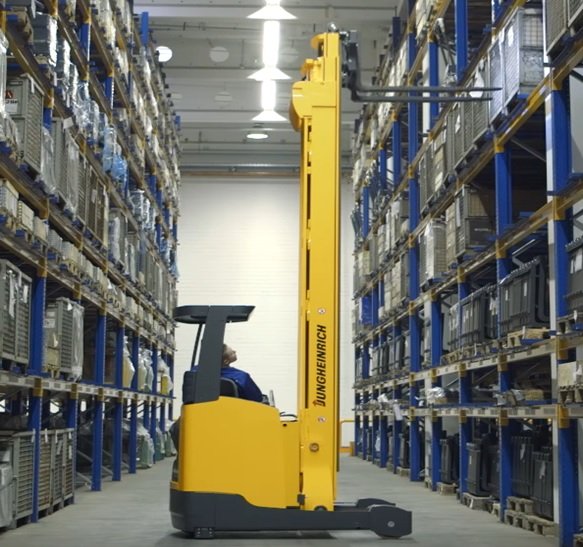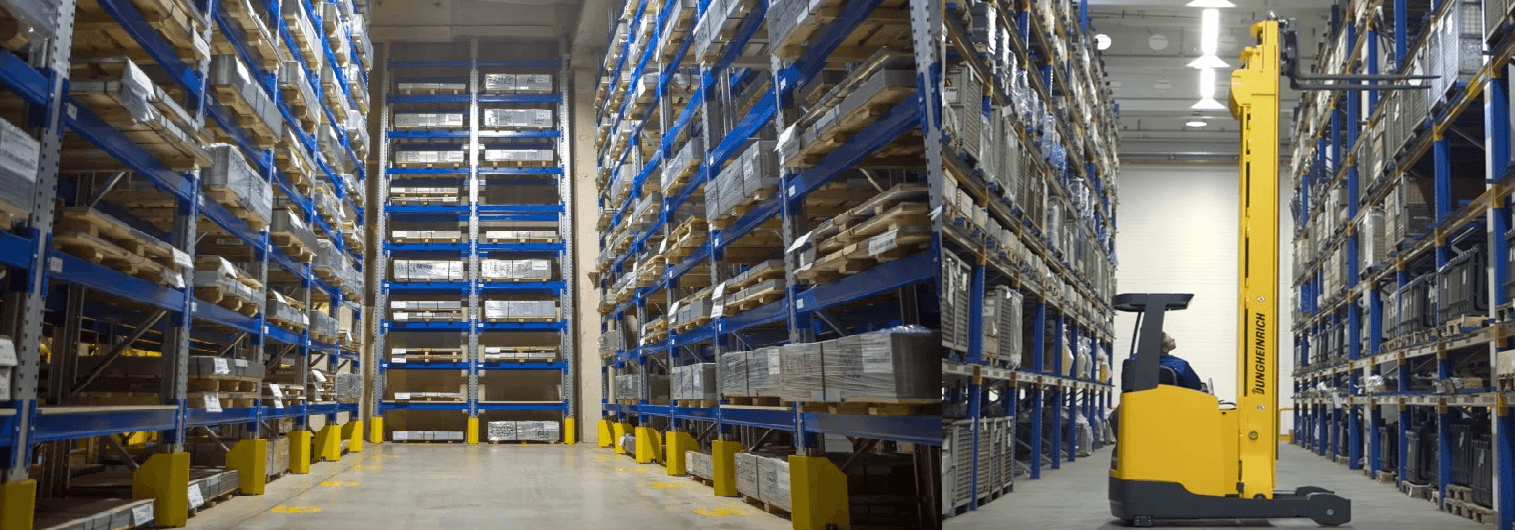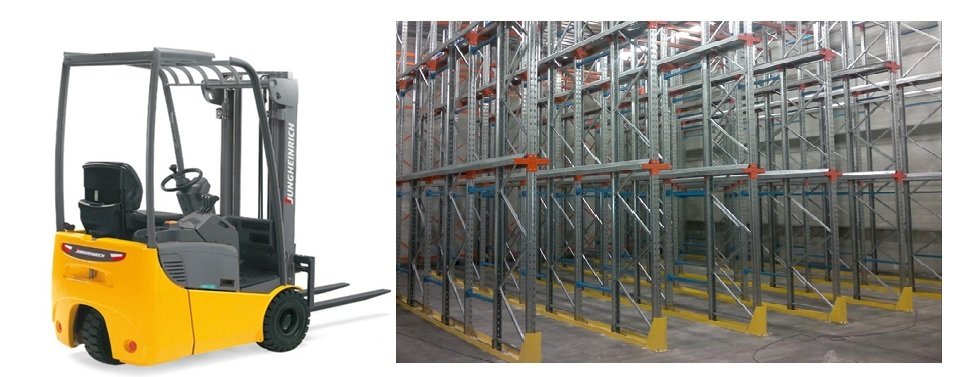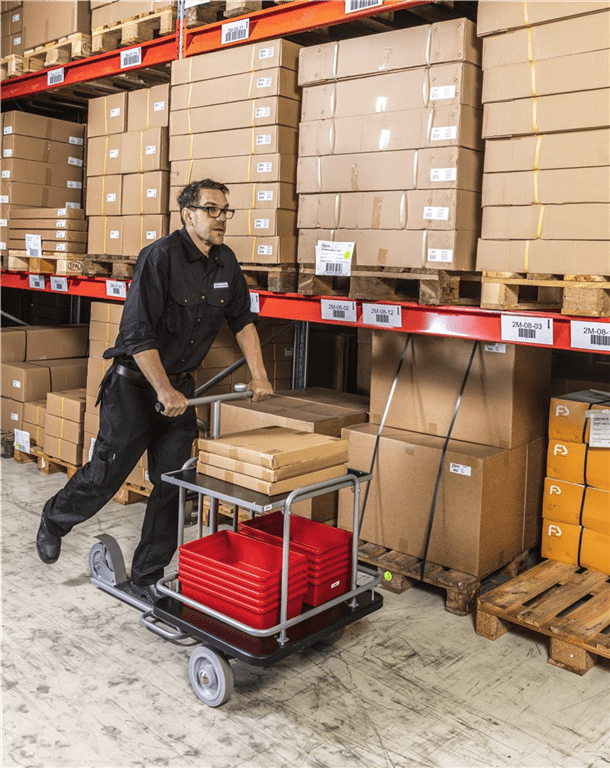Which comes first, the storage racks or the forklift? Ehk see muna ja kana teema lao planeerimisel.

When planning the layout of the warehouse, we always end up with the question “Have you thought about which lift you will be using?”. We thought that lift truck dealers might have a similar question “Which stock rolls come in and what are the spacings?”.
We visited Agrovaru OÜ’ s sales manager Toomas Tarangu to ask him about the experience of forklift dealers.

How long have you been working with forklifts?
18 years today.
What’s the biggest challenge for a forklift dealer…
Accurate clarification of the customer’s actual needs when purchasing a forklift truck. Getting the right message across to the client based on their needs, i.e. timely advice. And also taking a long-term view when making an investment.
Most common misconceptions when buying forklifts ? Some examples…
You can’t drive an electric scooter outdoors. The electric lift is doing well outdoors and is increasingly popular. Today, an electric lift can already operate for almost 24 hours, with the possibility of charging during lunch breaks and rest periods. Green thinking is coming more and more to the fore. Companies replace diesel and gas powered forklifts
What can I get cruelly wrong when buying a forklift? Some examples…
Pole type. One forklift can have approx. A choice of 20 different poles.
To give an example, there are two identical forklifts driving into a container and one lifts the goods but the other does not because the mast is against the floor.
Therefore, the mast must be monitored:
- the height of the freeswing – how far the forks move up before the mast starts to move.
- the structural height – what is underneath, how high is the lift to fit through doors, openings, etc.?
- maximum lift height – this is the maximum height of the mast of the lift truck.
For example, if we take a plan to grow from a small company to a big one in terms of forklifts, how would it be clever to organise everything?
It is worth thinking about rental solutions. Lifts can also be rented for short periods. Until the logistics are “sorted out”, hiring gives you the opportunity to test your thoughts and ideas. Optimise all your moves and movements. Find a partner or acquaintance with a bigger venture and learn from there. Get to know different lift providers and be curious. Most people still want to help, not to “stick it to them”. Consultation is important, you win in time and money.
Otherwise, depending on the goods, usually a hand pallet truck and then a three-wheel electric truck, that would do a lot. Moving in and out, loading and unloading from the truck, stacking, loading, stowing, etc., if the goods are underneath.
So how do you choose a forklift truck if the storekeeper talks and insists on one thing and the CEO has a different opinion?
The basics:
- What kind of work will you do?
- Where do you drive, indoors or outdoors?
- What and how high do you lift?
- How many shifts/jobs?
- Amount of goods/services ?
- How long are the distances?
Involve the vendor in your planning, it costs nothing.
How does the care element influence the customer’s purchasing decision?
That’s where the job of a forklift dealer really starts. A dealer’s service capability should be a big part of a customer’s buying decision. What does the lack of a forklift cost the company in money? It is necessary to investigate whether the vendor will have the necessary equipment, mobile workshops, replacement forklifts, quick response, rental options, etc… Will there be additional machinery for seasonal work or inventory? All to ensure that the purchase justifies itself and that the risks are mitigated in the event of breakdown or failure of the equipment.
The most exciting question then is whether the forklift or the warehouse truck comes first?

Should come with both + designer too. Usually, it’s a case of ordering one before the other and assuming that everything works together. Warehouse design should be based on the goods and their handling process. After all, we are building a warehouse for the goods that go into it. So the right thing to do is to get all parties around the same table. The customer comes with logistics and calculated storage space requirements, the warehouse planner makes the most efficient use of the space by planning the shelving, while already taking into account the type of forklift. If possible, the designer will set the walls, poles, ventilation, communications accordingly. The customer has minimised wasted space. If you plan later, you could easily lose a whole shelf area or have very narrow aisles for the forklift. Either way, you’re in a difficult situation for a long time.

